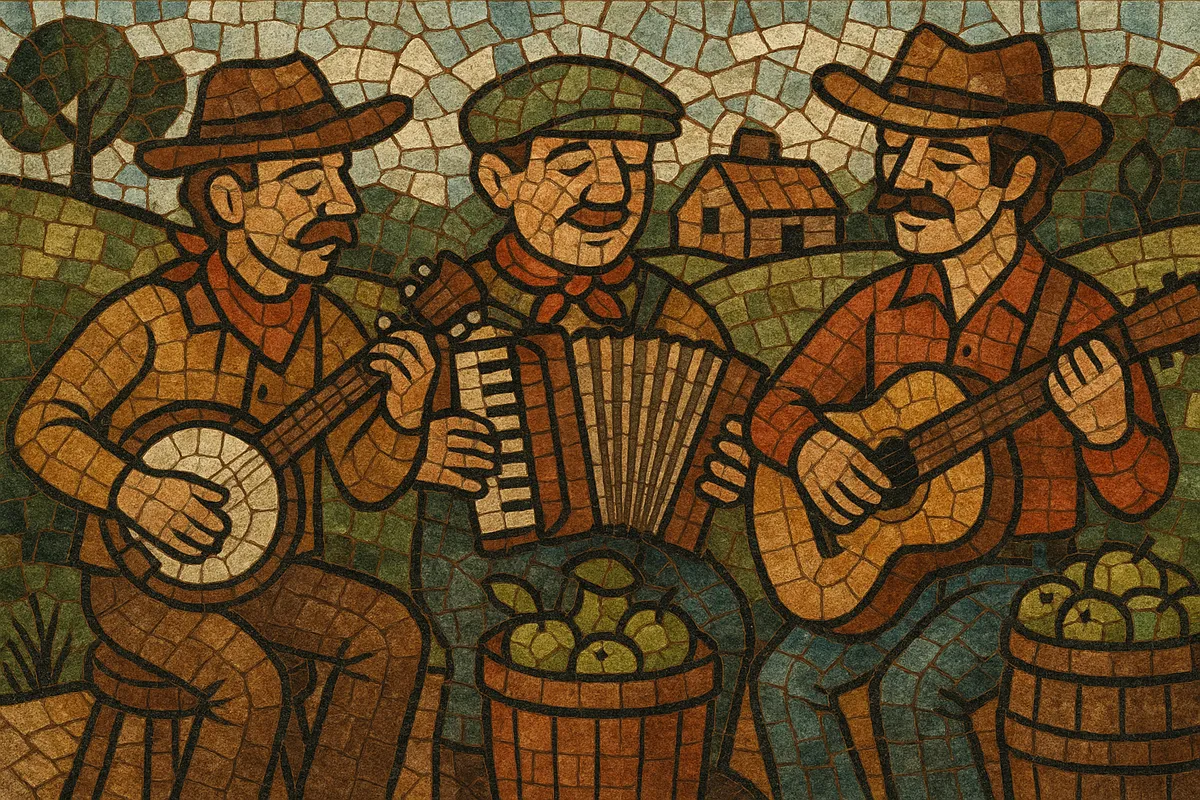
Scrumpy and western is a humorous, rural-leaning British music style from England’s West Country that playfully pastiches American country & western through a distinctly local lens.
It blends English folk song, music-hall/vaudeville comedy, pub-singalong energy and simple country dance rhythms, with lyrics delivered in West Country dialect about cider (“scrumpy”), farming, village life, and cheeky double entendres.
Arrangements are typically jaunty and acoustic—accordion/squeezebox, banjo, acoustic guitar, bass and drums, with occasional fiddle or brass—geared for crowd participation, call-and-response refrains, and easy-to-sing choruses.
Scrumpy and western emerged in England’s West Country in the mid-to-late 1960s, when local performers began fusing American country & western song forms with English folk and a music-hall comedic sensibility. The accent, themes (cider, farming, village characters) and pub-focused performance style distinguished it from both mainstream country and contemporary folk revivals.
The style entered UK popular consciousness in the 1970s through hit singles that repurposed well-known tunes with West Country comic lyrics and infectious choruses. This period cemented the genre’s signature: straightforward major-key harmony, two-step or shuffle rhythms, and crowd-friendly singalongs performed with accordion, banjo and acoustic rhythm sections.
Beyond records, scrumpy and western thrived as a live, communal experience—fêtes, harvest festivals, working men’s clubs and pubs—where performers mixed songs with patter, jokes and call-and-response. The performance culture echoed earlier British music hall and vaudeville, updated with country grooves and village humor.
From the 1990s onward, successive waves of regional bands and tribute/derivative acts kept the style alive, sometimes fusing it with punk energy or folk-rock instrumentation while retaining dialect humor and cider-centric themes. Its legacy persists in regional pride, novelty hits that remain staples of singalongs, and a small but dedicated live circuit across the West Country.

